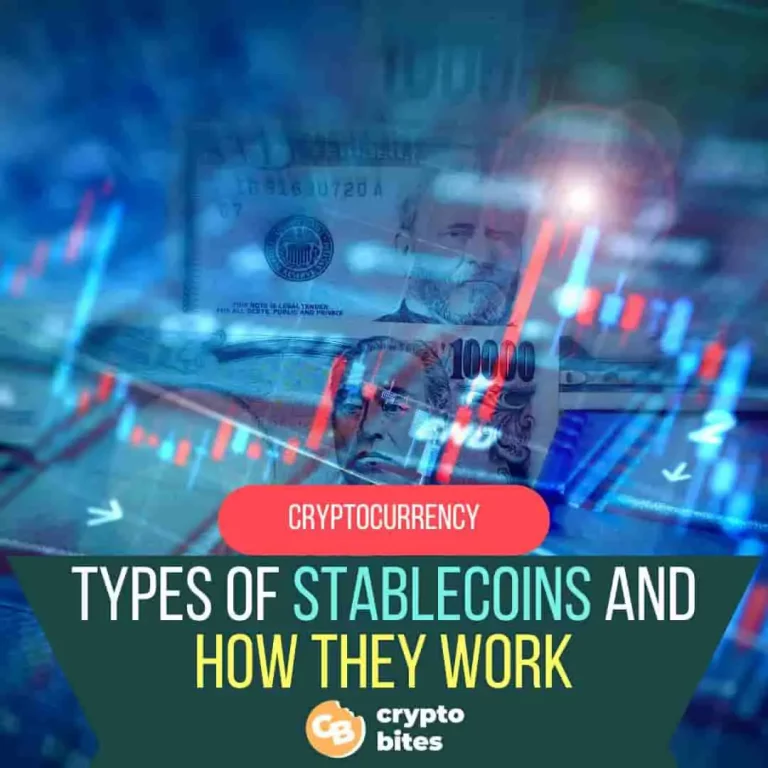
Types of Stablecoins and How They Work
Stablecoins, aptly described by their name, are ‘stable’ cryptocurrencies pegged to another currency, financial algorithm, or commodity. Their aim is to provide the inherent benefits of a cryptocurrency, such as cheap, fast, and decentralized transactions, without the volatility associated with them.
For instance, Tether is a stablecoin pegged to the US dollar. That means there’s a US dollar in reserve for every Tether token – denoted by USDT – you own. You can exchange your USDT for US dollars whenever you want.
Meanwhile, other stablecoins like $DAI are US dollar-pegged but backed by other cryptocurrencies, like Ethereum. A system of smart contracts keeps DAI’s value stable.
But what exactly does a peg mean? How do different types of stablecoins work? Let’s find out.
How Do Stablecoins Work?
To understand how stablecoins work, you must know what ‘pegged’ means. When we say that USDT is pegged to the US dollar, it means that its value is determined by the US dollar’s exchange rate. So, 1 USDT is equal to $1.
Since Tether is pegged to a fiat currency, it tends to be stable because it is backed by a centralized financial system. However, if the valuations become volatile, a centralized authority figure, like a central bank, can step in to control prices.
But not all stablecoins are fiat-backed. Some may be backed by cryptocurrencies, algorithmic functions, or precious metals. These stablecoins tend to be riskier than their fiat-backed counterparts (or are they?), as their prices depend on the commodity’s volatility.
Types of Stablecoins
There are four types of stablecoins based on their peg. Let’s discuss them below.
Fiat-Backed Stablecoins
A fiat currency is a currency that has been declared legal tender by a country’s government but does not have any fixed or intrinsic value, nor is it backed by a tangible commodity like gold. Fiat currencies include dollars, euros, pounds, riyals, etc.
A fiat-backed stablecoin is pegged against a real-world or fiat currency, such as the US dollar. Since there is a one-to-one ratio between the fiat currency and the stablecoin, your holdings in stablecoins are equal to that in the fiat currency.
Let’s explain. Suppose you have a million USDT or Tether, a USD-backed currency. That means you have a million US dollars.
The issuers of fiat-backed stablecoins ensure the stability of their tokens by keeping the relevant fiat currency as collateral. It means that at any point in time, the issuer has a reserve amount of fiat currency proportionate to the tokens issued.
For example, if Tether issuers issue 20 million USDT, they have 20 million USD in reserve. Since there’s always a reserve backing the tokens, their value remains stable. Therefore, you can redeem them for fiat currency whenever you want. Besides Tether, USD Coin (USDC) is another example of a fiat-backed stablecoin.
Crypto-Backed Stablecoins
A crypto-backed stablecoin uses one or more cryptocurrencies as its backing. While a fiat-backed currency relies on a financial institution to hold its reserves, a crypto-backed currency uses multiple smart contracts to get this collateral.
Since there’s no central financial institution in the mix, stablecoins can be traded on the blockchain without the involvement of any third party.
DAI is an example of a crypto-backed stablecoin backed by several Ethereum tokens, like BAT and ETH. Its value is kept at $1 by a series of smart contracts.
Instead of holding fiat currencies in reserve, the issuer holds cryptocurrencies. When you purchase a crypto-backed stablecoin, you lock the underlying cryptocurrency in a smart contract to get the stablecoins of equal representative value. You can return the stablecoins to the same smart contract if you need to withdraw your amount.
Issuers also over-collateralize these stablecoins to buffer against any price volatility in the underlying cryptocurrency collateral. So, for example, you’ll have to deposit ETH worth $2,000 to buy DAI stablecoins worth $1,000, creating a 200% collateralized ratio.
If ETH’s market price decreases but is still above a certain threshold, the extra collateral will buffer the stablecoin’s price for stability. But suppose ETH’s price goes below this threshold. In that case, it will trigger a liquidation of the collateral, resulting in losses for the holders.
Algorithmic Stablecoins
Algorithmic stablecoins ensure price stability by using smart contracts and algorithms to manage token supply in circulation. A common type is rebasing algorithmic stablecoins, in which, if the price of the stablecoin goes above a certain threshold, the issuer will issue new tokens. But if the price falls below this target, the number of tokens in circulation will be reduced to adjust the stablecoin’s value.
Meanwhile, over-collateralized algorithmic stablecoins depend on a large cryptocurrency reserve to issue fewer stablecoins. Since there is a more proportionate amount of cryptocurrency than the issued stablecoins, there’s always a buffer for price fluctuations. Examples of algorithmic stablecoins include Ampleforth and Frax.
Commodity-Backed Stablecoins
Commodities, like gold, metal, or real estate, provide stability to commodity-backed stablecoins. For instance, Paxos Gold (PAXG) is backed by a London Good Delivery market gold and is pegged against a fine troy ounce of gold in the said market. Another gold-backed stablecoin is Tether Gold (XAUt).
Commodity-based stablecoins allow holders to participate in the commodity market without dealing with the physical challenges and limitations of owning the commodity, such as gold or precious metals.
For example, a Tether gold holder can exchange their stablecoins for physical gold if they have at least 430 XAUt, which equals a 430 oz gold bar in the London Bullion Market Association. Once TG Commodities Limited verifies the transaction, holders can take their gold from any location in Switzerland.
Conclusion
Stablecoins have undeniably bridged the gap between everyday currencies and cryptocurrencies, acting as a medium of exchange. However, this isn’t always true for some commodity-backed stablecoins, such as those backed by real estate.
Despite that, stablecoins give interested individuals a chance to dabble in the crypto market without worrying about the price volatility of other cryptocurrencies. The stability also allows stablecoins to be adopted in credit and loan markets, making them a handy tool for small businesses and entrepreneurs.




